What is Hinduism's Holy book?
The most ancient sacred texts of the Hindu religion are written in Sanskrit and called the Vedas. Hinduism
does not just have one sacred book but several scriptures. The Vedas
scriptures guide Hindus in their daily life. They also help to preserve
the religious dimensions of family and society. Hindus have developed
their system of worship and beliefs from the scriptures.
Hinduism
does not just have one sacred book but several scriptures. The Vedas
scriptures guide Hindus in their daily life. They also help to preserve
the religious dimensions of family and society. Hindus have developed
their system of worship and beliefs from the scriptures.There are two main categories of the Hindu scriptures:
- Shruti ("that which is heard") consists of the four Vedas and Upanishads scriptures.
- Smriti ("that which is remembered") composed of traditional texts, including the Dharma Shastras (legal and ethical texts), the Puranas, and the folk/historical legends known as the Mahabharata and Ramayana.
The Hindu Holy Scriptures are mainly comprised of the following works written in the Sanskrit language:
1. The Vedas Rg-Veda (Rigveda), Yajur-Veda, Sama-Veda, Atharva-Veda (see further down )
2. The Upanisads - These
consider the nature of the individual soul (Atman) and the universal
soul (Brahman.) One of the Upanishads contains the earliest reference to
the reincarnation of the soul in different bodies (transmigration) of
the soul.
3. The Smrutis - (‘tradition) are the Laws of Manu (250 BC)
4. Ramayana -
Contains the story of Rama and his devoted wife Sita. She is kidnapped
by the demon king Ravana but is later freed by Rama with the help of the
monkey god Hanuman. The poem is about how good will always triumph over
evil and Rama and Sita are held up as role models for the perfect
husband and wife.
5. Mahabharata - An epic
poem telling the story of a war between two branches of a family. The
Bhagavad-Gita forms part of this and means "The Song of God."
6. The Puranas - A collection of ancient tales about the different incarnations and the lives of saints.
What is the Hindu way of life?
For many Hindus there are four goals in human life (purusharthas);
1 Moksha - the release of the soul (Atman) from the cycle of rebirth. The individual soul (Atman) unites with Brahman the universal soul. There are different ways to Moksha.
- spiritual - involves acquiring spiritual knowledge through yoga and meditation. devotion to god
- working selflessly for the good of society.
How a person is reincarnated is determined by karma.
Dharma - the code for leading one's life. Respect for elders is considered important and many consider marriage as a son's religious duty.
Artha - the pursuit of material gain by lawful means.
Karma- through pure acts, knowledge and devotion, you can reincarnate to a higher level. The opposite achieves the contrary result.
Why are there so many Hindu Gods?
Hindus actually only believe in one God, Brahman,
the eternal origin who is the cause and foundation of all existence.
The gods of the Hindu faith represent different forms of Brahman. These
gods are sent to help people find the universal God (Brahman).
Most Hindus have a personal god or godess such as Shiva, Krishna or Lakshmi to whom they pray regularly.
The three most important Hindu gods (forms of Brahman) are:
 |
 |
 |
| Brahma - known as the Creator. (Description) |
Vishnu - Known as the Preserver (Description) |
Shiva (Siva)- known as the Destroyer. (Description) |
Other Hindu gods include:
Saraswathi - Goddess of Wisdom - Wife of Lord Brahma. (Description)Saraswathi is the Hindu goddess of knowledge, music and all the creative arts.
Lakshmi - Goddess of Wealth - Wife of Lord Vishnu. (Description)
Lakshmi is the goddess of light, beauty, good fortune and wealth.
Parvati - regarded as a representation of Shakti. Parvati is the wife of Lord Shiva and the Godess of household and motherhood.
(Shakti is by literal definition sacred force, power, or energy. Shakti is the personnification of Brahman as feminine)
Ganesha - Son of Shiva and Parvati. (Description)
The Hindu god in a human form but with the head of an elephant.(pictured right)
There is a remarquable religious tolerance
embedded within the pantheon of countless Hindu gods and goddesses,
allowing anyone to experience the divine in the way that suits best at a
particular time. This also explains how it is possible for many
different Hindu gods and goddesses to be worshipped by members one
and the same Hindu family. For those that are strangers to India and Hinduism this may appear as
strange, as most other religions are less obviously tolerant towards
other points of view. Yet it is easy to experience whenever you are in
India. You should then not waste the opportunity to try out the
following test : ask the Hindu people you meet which are their favorite hindu gods and goddesses. You will get very diverse answers, with Ganesha, Shiva, Hanuman, Durga, Lakshmi
and many other Hindu gods and Goddesses named. If then you ask the same
people how their favorite Hindu gods and goddesses relate to other
hindu gods and goddesses, you will usually get the same answer : "Well
of course, all Hindu gods and goddesses are the same god or divine
energy, nameless and without form - only in this particular form I like
my hindu gods and goddesses best".
Holy Books of Hinduism
In Hinduism there is not exactly a text that is a must for the follower. Even without reading the sacred texts one can get to the Eternal Bliss and also just reading the holy scriptures alone will not lead to the great liberation, as per Hinduism !
But is there a common scripture that is considered holy by all sections of Hindus ? Yes, the vedas(1) are the common holy scripture for the Hindus. In fact they gave Hinduism the name vaidika dharma, one of its old names. What are vedas ? vedas, refer to the knowledge. That is the knowledge heard by the sages in their spiritual domain and passed across as it is as mantras. mantras(2) are the words of super-power, that produce grand effects when chanted. As compared stotras are the scriptures that came out of the thoughts of human beings that hail God. However it cannot be interpreted that the human made stotras are not glorious. In fact the sages associated with the vedas are also attributed to have composed many stotras.
vedas have four parts - samhita, brAhmaNa, Aranyaka & upanishat. The samhitas are the core part of vedas. They are full of mantras. brAhmaNas help in the application /interpretation of the vedic samhitas. Aranyakas and upanishats are the philosophical part. upanishats cover a spectrum of analysis of the God and relation to It for the soul. They are the benchmarks (prasthAna) in Hindu philosophy. So the philosophers when establishing their concepts proclaim that their theory stands good with the benchmark upanishats. The essence of the upanishats is brought out in brahmasUtra composed by vedavyAsa, the one who organized the vedas. The four categories of vedas are Rig, yajus, sAma, atharva. vedas are the voice of the Divine preserved as it was heard by the sages and hence they are called shRuti. There is another set of scripture are the things remembered from the voice of God. They are called smRuti.
Agamas (3) are the engineering documents, if vedas are considered as science. They describe both on the individual level as well as for the community, how the knowledge has to be implemented to get the ultimate benefits. These are the tantra text that complement the mantra of vedas. These provide guidelines as to in what ways the worship of God can be performed, temples built etc. They have great amount of details on yoga also. They cover the paths in four titles charya, kriya, yoga, GYAna (service, worship, union and wisdom). There are 28 shivAgamas. Each religion in Hinduism has its own set of Agamas. vaiShNava has two Agamas, shakta has the tantras and so on.
puraNa, itihasas (4) are the tales of the ancient times. There are 18 purANas that describe the glorious acts of God, describe the creation, give an elaboration of the geography of the world and some of the lineages of kings are mentioned. In contrast two itihAsas (rAmAyaNa & mahAbhArata) deal with two lineages of kings (sUrya & chandra vamsa respectively) and they also talk about the glorious acts of God. Being in the form of stories these are taken to each of the villages and houses of ancient and modern times, by paurANikas or history tellers, that there would be people who do not know about the vedas, but hard to find one who does not know any of the purANic stories.
Some of the more popular Hindu scriptures are gIta, yogasutras and there are scriptures available for each set of philosophical paths in Hinduism like siddhanta shastras, spandha kArikas etc. The stotras (hailing) (5) bring out the excellence of Hindu devotion. The stotra literature is very vast in all the languages of people practicing widely Hinduism. They cover the complete range of the religion from hailing the names of God to putting the essence of a complex philosophy in a simple language of four line verse ! Like the pollen as digested by the bees bring out the honey, the spiritual experience of the saints pour out as the rich stotras for the rest of the world to benefit.
http://www.shaivam.org/hipscrip.htm
What are the Symbols of Hinduism?

Also spelled "Om," in Hindu thought this image represents a sacred sound.
Go here for a full article on Aum in Hinduism.
Go here for Hindusim facts.
Go here for Hinduism beliefs.

Go here for a full article on bindi, including more image.
To learn about Diwali go here and Holi go here.)

This is the symbol of the god, Shiva.
For a full article on linga go here.
For a full article on Shiva go here.
Go here to read about Hindu deities.

The lotus flower represents beauty in Hinduism, and can also carry other meanings.
Go here for a full article on the lotus flower.
See Hinduism facts here.

This symbol combines two triangels, a rising sun, and a swastika.
Go here for a full article on Pratik.
For Hindu beliefs go here.

The connotations of the swastika in the Western world aren't the same as those in the East.
Go here to read a full article on the swastika in Hinduism.
Learn about Karma in Hinduism here.

Like a bindi, a tilak is a mark on the forehead.
For a full article on tilak in Hinduism go here.
For Hindiusm facts go here.
For Hinduism beliefs go here.

Also spelled "Trishula," this trident is an important symbol in Hinduism.
Go here to read more about trisula.
Learn more about Namaste in Hinduism here.

In Hinduism, this symbol represents the universe.
Read more about yantra here.
Learn about cows in Hinduism here.
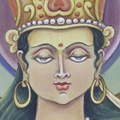
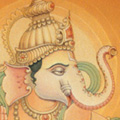
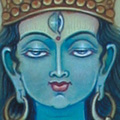
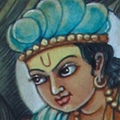
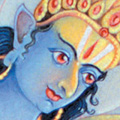
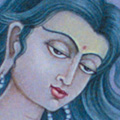
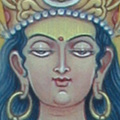
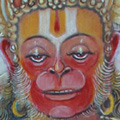
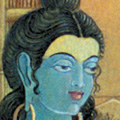
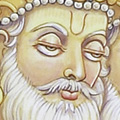
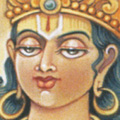
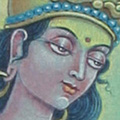
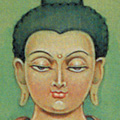
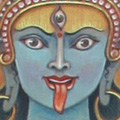
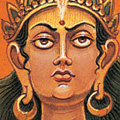
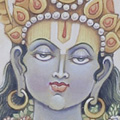
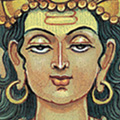
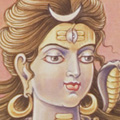
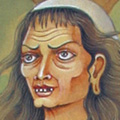
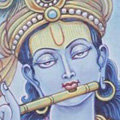
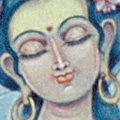
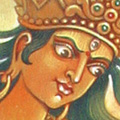
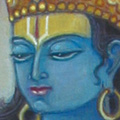
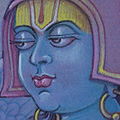
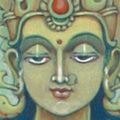
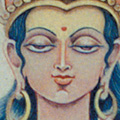
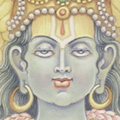
proud to be an hindu.... awesome site with nice info... hanuman chalisa team members
ReplyDelete